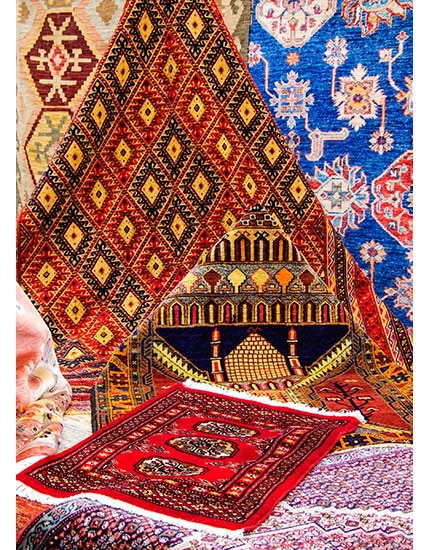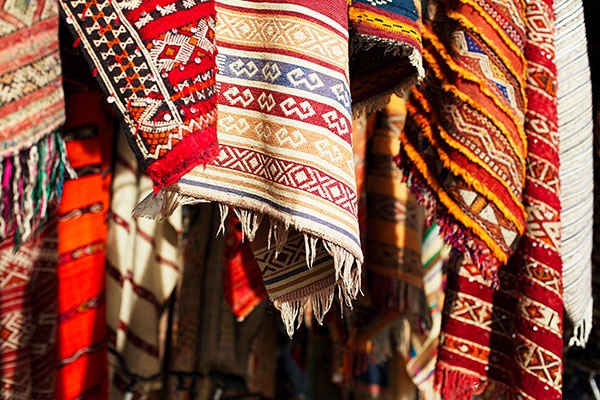
The number one rule to follow, to save your wallet from jumping to size zero is to try and stay clear of the big cities. Every big city—Mumbai, Delhi, Bangalore and so on, are catering to tourists. Instead, you need to head to the source. Make the trip to Agra, Jaipur or the villages of Mirzapur—which are the sources of about 90 per cent of Indian carpet production.

The two things you want to be weary off while purchasing your first authentic carpet is this: firstly, you have to make sure you’re not spending on a machine made carpet, and secondly you need to make sure you’ve got an original design. To prevent this from happening, you need to be in the know about the knot count. Indian, Persian, Turkish and Chinese carpets and rugs—also known as exotic carpets are made of natural fibres that have been hand-knotted or hand-woven on a loom. To find out whether a carpet is hand-made or machine made, simply flip it to its reverse—the knots on a machine made carpet will be suspiciously uniform. With traditional rugs, you want at least 120 knots per square inch.

The burn test is one of the most popular tests to check the authenticity of a carpet. Ask your dealer to burn an unpicked spot or a snippet of the fringe—if it’s made out of wool or silk the carpet will smoulder, if it’s made out of anything else, it’ll catch light. Now days, most dealers are used to people demanding the burn test and will provide the matches themselves—but at least they’ll know then that you’ve done your research and know what you’re talking about, which always helps in the bargaining process.

If you’re going to spend the time, money and effort into purchasing a carpet, you might as well do it right and that means no artificial dyes. Experts have claimed that natural dyes are comparable to the richness in colour that a bunch of flowers will give you. One way to check whether or not your carpet has natural dyes versus artificial dyes is by bending the carpet so that it exposes the individual threads from the base to the tip. Synthetic dyes will colour the entire thread evenly whereas natural dyes tend to show more variance.

And finally, always make enquires about the maintenance of your carpet: how often does it need to be cleaned? Do you need any special equipment to clean it? Remember that textured carpets and rugs tend to conceal foot prints and resist dirt better and they’re also easier to clean. Remember to clean your carpet or rug at least once a week. This will prolong the life of your carpet, by preventing grit collecting in the carpet fibres. If your carpet experiences a spill, clean it immediately. Your best bet to completely get rid of the stain is to catch it when it’s fresh—but make sure you don’t rub the stain, as this may spread the stain to a larger area. Before using any cleaning agent on your carpet, test it out in an inconspicuous area on the carpet to see how it reacts, to make sure it does not further damage it or cause any discolouring.
















 Privacy Notice
Privacy Notice
Written by Nazneen Joshi on 29th Jan 2015